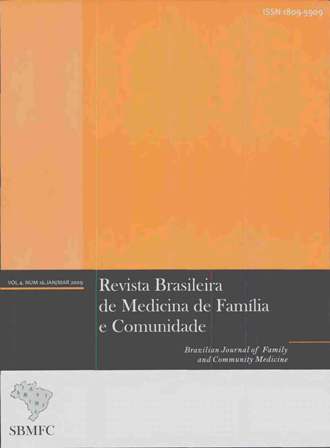Seeing the other through the screen: movies, humanization of medical education and Family and Community Medicine
DOI:
https://doi.org/10.5712/rbmfc4(16)422Keywords:
Family and Community Medicine, Motion Pictures as a Discipline, Teaching Materials, Medical Education, HumanitiesAbstract
The unprecedented technological development observed in the last century and beginning of this one has expanded the horizons of the medical science exponentially, making the content to be envisaged by the colleges practically unfeasible. The incorporation of this knowledge in the curricula took place in detriment to human sciences, formerly included as a routine in the schools of medicine all over the world. Negligence of the humanization of medical education may keep from endowing future physicians with the affective resources necessary to the establishment of a satisfactory physical-patient relationship. This study proposes evaluating the use of motion pictures in the humanization of the way graduates see patients, providing them with capability and empathy toward their patients. Three documentaries that correlate indirectly with themes relative to Family and Community Medicine were selected: worker’s mental and community health. After screening to small groups of students, there was a multidisciplinary discussion covering all the several themes relevant to the medical practice. Finally, questionnaires were applied where the students evaluated the importance of the experience in their education, as well as replied to questions about their contact with arts and personal interests. All the students considered the level of correlation of the motion pictures chosen as a good or excellent medical practice. Questioned on the relevance of the themes covered in their education, 94,1% of them answered good or fine. The same percentage considered the curricular inclusion of methodology also good or fine. It was observed that the students evaluated read less than the national average, and a considerable amount of them is not interested in or has never been to a theater, an art exposition or a dance show. The movies, however, proved to be very popular - confirming its potential as a humanizing teaching resource.
Downloads
Metrics
Downloads
Published
How to Cite
Issue
Section
License
By submitting a manuscript to the RBMFC, authors retain ownership of the copyright in the article, and authorize RBMFC to publish that manuscript under the Creative Commons Attribution 4.0 license and identify itself as the vehicle of its original publication.















